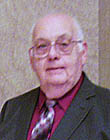|
|
This topic comprises 2 pages: 1 2
|
|
Author
|
Topic: Port Hole Question
|
|
|
|
|
|
|
|
|
Kenneth Wuepper
Phenomenal Film Handler

Posts: 1026
From: Saginaw, MI, USA
Registered: Feb 2002
|
 posted 05-30-2002 05:06 AM
posted 05-30-2002 05:06 AM




Yes!There was one in the Temple Theatre in Saginaw as well as one in the Regent Theatre in Bay City. I think there is a picture of one in the photo gallery. The Byrd Theatre in Richmond VA might still have one. KEN
| IP: Logged
|
|
|
|
Stephen Furley
Film God

Posts: 3059
From: Coulsdon, Croydon, England
Registered: May 2002
|
 posted 05-30-2002 07:16 AM
posted 05-30-2002 07:16 AM




The Byrd is the only theatre I know of still having a Brenograph in regular use. There is one in working order in the collection of the Projected Picture Trust at Bletchley Park, near London, but this has been converted to xenon. Many of the large 1930s super cinemas in the uk had them at one time. I have operated one a couple of times. Over here, Ross made a similar machine, but these were much less common even over here than the Brenograph; The Odeon Leicester Square had one, I don't know if it's still there.Film-Tech has a 1929 Brenkert available in the manuals section which has pictures of the Brenograph and some of its accessories. Note the prices of this equipment, it was not cheap, over $800 for the basic machine in 1929. I like the 'teapot spout' style smoke vents from the lamps. Last month I visited the Loew's Jersey Theater, they still have two Brenographs installed, sadly not in working order at the moment, but they look restorable. There is something odd about their machines, it was nommal practice to install a hood over the machine for fume extraction, the Loew's is different, there is ducting attached directly to the vents on each lamp, the two pipes join above the machine, and then go out through the roof of the box (booth). I see a problem with this arrangement; you do not focus a Brenograph by moving the lens, the lens stays still, and everything else, including the lamp moves, I am not sure how the lamp moves, when it has ducting attached to it.
| IP: Logged
|
|
|
|
|
|
Kenneth Wuepper
Phenomenal Film Handler

Posts: 1026
From: Saginaw, MI, USA
Registered: Feb 2002
|
 posted 05-30-2002 08:47 PM
posted 05-30-2002 08:47 PM




Hello, Frank, There is no question that the best port substance is air! The Fire Marshal has some idea that it should be a fire restraining material. The audience thinks it should be a silencing material. (They don't like hearing the operators stale jokes)(And the intermittent is silent!)
Truth is-the closer to the quality of the lens that port material becomes, the better the image will be.
Have you taken the Lexan out and examined it carefully? There will be an area which is very discolored where the image was projected. The hardness of the material will be very high at this area also.
Plate glass is a possible choice since the surfaces are very parallel and do not doistort the transmitted light rays. The color of the glass (usually green) does effect the color rendering of the image. Water Clear glass has parallel surfaces and does not effect the color rendering of transmitted images. Whenever there is a change of density in the light path, some diffusion occurs and also, the light is partially reflected back to the source which reduces the efficiency of the material. Optical coatings minimize this problem.
As you can see... Parallel surfaces, colorless material and optical coatings are all players in the port covering issue. The final point is the angle of the glass through which the light passes. This angle of reflection equals the angle of incidence and so if the glass is parallel to the film plane, light will be reflected back into the lens. It may be reflected across the booth into the adjacent theatre or perhaps, when angled too much, even back into the sound head where it will sound like the reader is seeing shutter pulsed light. (Because it is!)
Enough of this, I need to get some sleep.
KEN
| IP: Logged
|
|
|
|
|
|
|
|
Frank Angel
Film God

Posts: 5305
From: Brooklyn NY USA
Registered: Dec 1999
|
 posted 05-31-2002 07:15 PM
posted 05-31-2002 07:15 PM





OK, I get the picture -- optical grade, coated glass is the best. Thanks for the feedback Ken. John said the two words that will make me resist the cheap way out -- optical flare. It is the one factor that I couldn't measure. In our big theatre we have such a steep throw to the screen that mounting the port glass paralled to the wall, i.e., no angle, works just fine because the projector is angled -- saves us the need to buy those expensive port boxes. Funny thing about glass parallel to the lens.... in the museum theatre, they installed a window the width of the booth made of optical glass (imported at immense expense from Germany no less, but then didn't have enough money to install digital sound....say-
la-vee). There is precious little angle in this booth so the glass is virtually parallel to the lenses. One of the tech guys was testing out a slide projector with a test grid slide and claimed that he couldn't focus the image. I checked it out and sure enough, the image was out of focus evenly across the entire frame and couldn't be brought into focus. I told him to switch lenses. A new lens didn't fix it. Ok, it's not the lens. Put in another test slide. Any number of slides were tried -- problem didn't go away. Finally I went down to the screen to see what this looked like from close up. The test grid went back in and I stood at the screen. From close up I could see that the image wasn't really out of focus; it was just a double image, one slightly off from the other. I yelled up for the techie to slide the glass panel out of the way. He did; the image cleared up. Evidently the projector was positioned in such a way that the port glass reflected the image directly back at the lens which reflected it back to the screen. We corrected the problem by moving the projector so that it was further away from the window and slightly angled. I never had that problem with the 35mm in this booth, so it must have been just weird random optics geometry coming together to produce this effect. But there is no doubt parallel glass surfaces CAN impact on the image. Frank
| IP: Logged
|
|
Josh Jones
Redhat
Posts: 1207
From: Plano, TX
Registered: Apr 2000
|
 posted 05-31-2002 08:46 PM
posted 05-31-2002 08:46 PM





I would venture to say that the thickness of the glass alone would create a double image. Because of the way lenses are made, they are not a flat piece of glass, so uniform relection across the frame would be impossible. Then add to this fact that *most* lenses are coated, you could not get a strong enough reflection off the last element to reach the screen.Just a thought or two  Josh P.S. I have been told by more than one person that the only reason to tilt the glass is to keep the reflection out of the adjacent auditorium. ------------------
"Film is made of silver, video is made of rust"
'nuf said
| IP: Logged
|
|
|
|
All times are Central (GMT -6:00)
|
This topic comprises 2 pages: 1 2
|
Powered by Infopop Corporation
UBB.classicTM
6.3.1.2
The Film-Tech Forums are designed for various members related to the cinema industry to express their opinions, viewpoints and testimonials on various products, services and events based upon speculation, personal knowledge and factual information through use, therefore all views represented here allow no liability upon the publishers of this web site and the owners of said views assume no liability for any ill will resulting from these postings. The posts made here are for educational as well as entertainment purposes and as such anyone viewing this portion of the website must accept these views as statements of the author of that opinion
and agrees to release the authors from any and all liability.
|

 Home
Home
 Products
Products
 Store
Store
 Forum
Forum
 Warehouse
Warehouse
 Contact Us
Contact Us




 Printer-friendly view of this topic
Printer-friendly view of this topic















